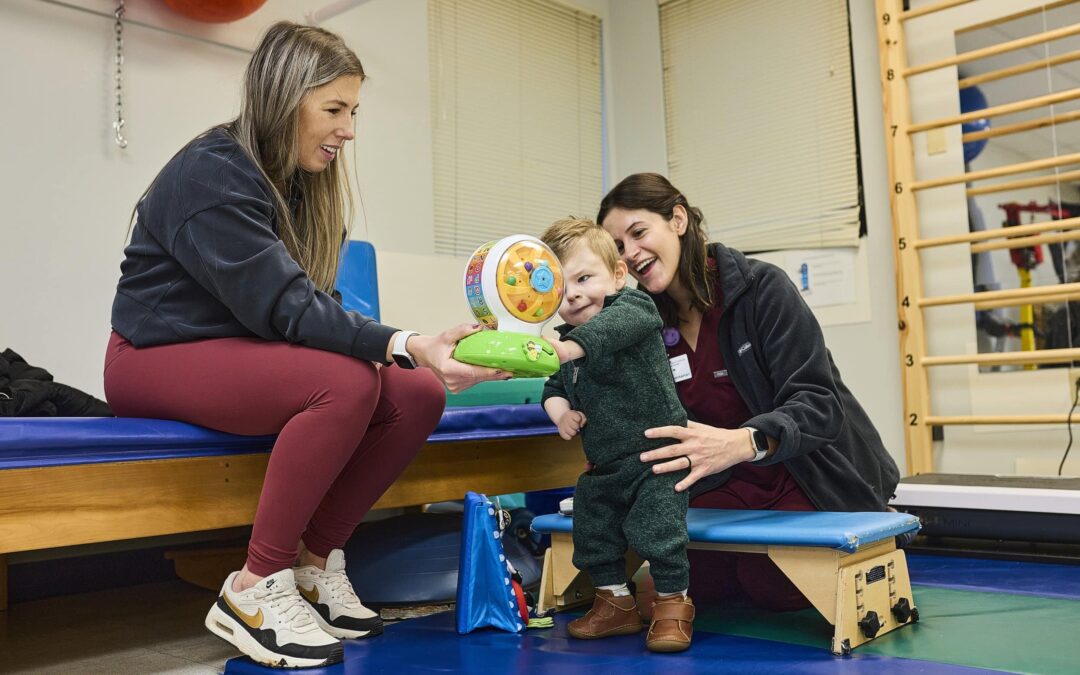When we talk about maximizing the developmental potential of children, combining forces through co-treatment in speech-language pathology and occupational therapy provides a unique and impactful approach. In our multi-disciplinary studio, we have discovered that integrating these two services optimizes outcomes, allowing children to gain more comprehensive benefits than if they were receiving each therapy in isolation.
Co-treatment involves speech-language pathologists and occupational therapists working together in synchronized sessions, where therapeutic goals are aligned and interventions are collaboratively executed. This not only ensures that children are receiving holistic care that addresses multiple aspects of their development simultaneously, but it also allows therapists to utilize their distinct skills in a complementary manner. By merging their expertise, children have the opportunity to practice new skills in a dynamic and multifaceted environment, which is crucial for enhancing learning and retention.
Our approach is centered around creating treatment plans that address each child’s specific needs, using combined insights from both speech-language pathology and occupational therapy. This dual perspective not only enriches our understanding but also tailors the development process more precisely to each child’s challenges and strengths. In the following sections, we will delve deeper into how this collaborative model works, the core benefits it offers, effective strategies that we employ, and how to identify children who might benefit the most from this form of therapy.
Exploring the Synergy: What Does Co-Treatment in Speech and Occupational Therapy Involve?
Co-treatment, where speech-language pathologists and occupational therapists collaborate, is a strategic approach that we use to enhance developmental outcomes for children. This integrative therapy model facilitates simultaneous focus on speech and motor skills, ensuring a more rounded development. During a co-treatment session, both therapists are present, crafting activities that incorporate elements from both speech therapy and occupational therapy. This might look like an occupational therapist assisting a child in fine motor skills necessary to hold a marker, while a speech therapist works on communication tasks such as requesting colors or describing a picture that the child is drawing.
The real magic happens through the seamless interaction between the therapists. They are constantly communicating, observing, and adapting to support the child’s learning process. This might involve alternating lead roles in directing activities or simultaneously guiding the child to use newly learned skills in speech together with motor tasks. For example, when a child is learning to articulate certain sounds, the occupational therapist might also engage the child in activities that require attention and hand-eye coordination, which ties into the overall learning goal, strengthening the integration of new skills.
Core Benefits of Speech and Occupational Therapy Collaboration
The collaboration between speech-language pathologists and occupational therapists in our studio doesn’t just support a child’s development—it accelerates it. Here are some of the core benefits our children receive from this approach:
- Holistic Development: Co-treatment addresses multiple developmental needs simultaneously. As children engage in activities, they are not only practicing speech or motor skills, but they are also learning how to integrate these skills effectively in various contexts.
- Enhanced Motivation and Engagement: Children often find the dynamic nature of co-treatment sessions more engaging and fun. This increased engagement boosts their motivation to participate and practice new skills, which can lead to faster gains in both speech and motor abilities.
- Improved Generalization of Skills: Learning a skill in isolation can limit a child’s ability to apply it in different contexts. The integrated approach in co-treatment ensures that children can generalize the skills they learn across different settings, be it at home, in the classroom, or in the community.
- Efficient Therapy Sessions: By combining therapy sessions, we can minimize the total number of sessions children attend each week, reducing fatigue and scheduling conflicts for families. This makes the therapeutic process less stressful and more manageable for parents and children alike.
- Cross-Disciplinary Learning: Our therapists learn from each other during these sessions, which enriches their therapeutic techniques and interventions. This cross-disciplinary understanding enhances the quality of care and innovative approaches we can provide, ensuring our therapies are not only evidence-based but also creatively delivered for maximum effectiveness.
By bringing together the specialized skills of both speech-language pathologists and occupational therapists, we are able to provide a powerful, dual-focused approach that supports significant improvements in our children’s developmental trajectories.
Effective Techniques Used in Speech and Occupational Therapy Co-Treatment
In our co-treatment sessions, we utilize a variety of techniques that synchronize the expertise of both speech-language pathologists and occupational therapists. This ensures that each session is tailored to maximize developmental gains across cognitive, communicative, and motor domains. One effective technique involves applying role-playing games that encourage verbal communication and physical interaction simultaneously. Through these games, children practice turn-taking, express their ideas, and perform fine motor tasks such as moving game pieces, which integrate both linguistic and motor skills.
Another technique involves utilizing technology, such as tablets or smartboards, where cooperative tasks are set up. Children may work together to solve puzzles or create stories through interactive apps. These technologies cater to enhancing speech clarity and comprehension while simultaneously requiring the physical manipulation of touch-based interfaces, which are instrumental in developing fine motor skills and hand-eye coordination. By embedding speech and language goals into occupational therapy exercises, and vice versa, children experience a cohesive learning environment that makes therapy more engaging and relevant to everyday situations.
Identifying Candidates: Who Benefits Most from Combined Therapies?
Determining whether a child might significantly benefit from co-treatment involves assessing various factors including their current skill levels, specific developmental challenges, and their overall therapy goals. Typically, children who show overlapping needs in speech and motor skill development are ideal candidates for these integrated sessions. This includes kids who may have difficulty with expressive communication and also struggle with physical tasks like writing, cutting, or self-care activities.
Children with conditions such as autism spectrum disorder, cerebral palsy, or developmental delays often find immense value in co-treatment, as these sessions address multifaceted aspects of their development holistically. During assessments, our therapists look for cues in a child’s performance that suggest a dual need for speech and occupational therapy. When both areas require intervention, combining the therapies can not only streamline the treatment process but also accelerate improvements by reinforcing cross-domain connectivity and learning.
Conclusion
At our studio, we champion the combined forces of speech-language pathology and occupational therapy to offer a co-treatment approach that has shown remarkable results in children’s therapy. Integrating these disciplines allows our therapists to craft more dynamic and impactful sessions that engage multiple developmental areas simultaneously. Our unique method emphasizes collaboration, not just among professionals but with families as well, ensuring that our interventions continue to support a child’s development outside the therapy room.
If you think your child could benefit from our specialized co-treatment of speech and kids occupational therapy, don’t hesitate to get in touch. At Watch Me Shine, we’re dedicated to unlocking each child’s potential through innovative and compassionate therapeutic practices. Contact us today to learn more about how our services can assist in your child’s development and set them on a path of success and independence.

